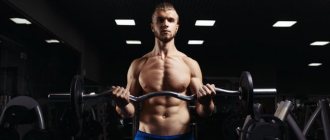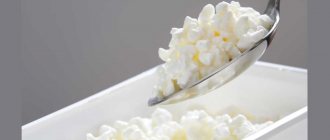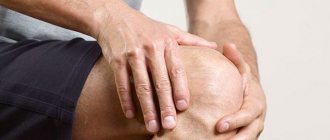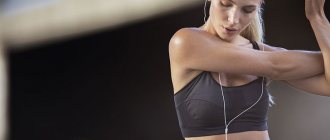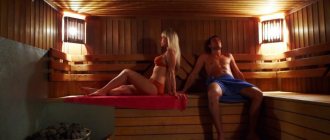Protein-carbohydrate window[edit | edit code]
This article is an adapted translation of the 2013 scientific review “Nutrient timing revisited: there is a post-exercise anabolic window” from the Journal of the International Society of Sports Nutrition. By Alan Albert Aragon and Brad Jon Schoenfeld.
Protein-carbohydrate or anabolic window
is a hypothetical metabolic state in which the body is in dire need of nutrients (primarily protein[1] and carbohydrates) that, when consumed at specific times, lead to maximum anabolic response and muscle growth,[2] and just as importantly, it does not lead to the formation of fat mass.[3] In English, the term “Nutrient timing” is often used, or the strategy of eating around training time. Typically before and after training.
Many authors claim that this approach is the most productive for creating a beautiful body. It is also postulated that nutrition during the protein-carbohydrate window plays a more important role than all other food consumed during the day.
Theoretically, taking a certain ratio of proteins and carbohydrates leads to the initiation of restoration processes in muscle fibers damaged during physical training, as well as the replenishment of energy reserves, and this occurs according to the principle of supercompensation, leading to an improvement in body composition (the ratio of fat and dry mass), as well as increasing sports (strength) performance. Some researchers use the term “window of opportunity,” which describes a limited period of time after training that provides the opportunity for rapid recovery and growth with proper nutrition. Many authors emphasize that the significance and even the presence of the protein-carbohydrate window can vary significantly depending on a number of factors.
However, the significance and, most importantly, the reliability of these judgments have not yet been tested. Moreover, recent scientific evidence has called into question the classical concepts of the protein-carbohydrate window, namely the relationship between nutrient intake after exercise and anabolic processes.
Alan Albert Aragon and Brad Jon Schoenfeld set themselves the following tasks:
- Conduct a literature search on this issue
- Draw scientifically based conclusions on the basis of which to build recommendations for obtaining the maximum anabolic response during strength training.
The original article is located at:
https://www.jissn.com/content/10/1/5
Sportswiki contains translations of the most important theses and practical information. Most of the literary research, considering numerous biochemical and physiological aspects, was omitted for its absolute practical unsuitability. A list of the main studies can be found in the figure to the right.
When does the window appear?
Everyone knows the feeling of extreme hunger after physical activity. This condition can be called an everyday case of the protein-carbohydrate window.
Typically this period lasts from 20 to 40 minutes after training. Emerging hunger signals that the body has used up its own reserves and urgently needs replenishment.
Some athletes prefer not to succumb to hunger, knowing that after exercise it is necessary to refuse food for 1.5-2 hours. Since the body is not yet ready to fully accept food. However, we are talking here more about a full lunch or dinner. That is, about solid foods that require time and energy to digest.
Immediately after training, you can drink a factory-made or home-made protein-carbohydrate (if you are gaining weight) or protein (if you are losing weight) shake. Liquid food is easily digested, and nutrients quickly enter the bloodstream.
Scientific data[edit | edit code]
List of Key Studies and Findings
Despite claims that immediate post-workout eating is important for maximizing muscle hypertrophy, the scientific support remains fragile. This hypothesis is based on the assumption that when training is performed on an empty stomach, muscle protein breakdown occurs because a negative amino acid balance develops, which persists after training, even though exercise stimulates muscle protein synthesis.[4]
Thus, if training occurs immediately after sleep, there is a need to urgently provide the body with nutrients, namely proteins and carbohydrates. This is required to accelerate the synthesis of muscle proteins and suppress proteolysis, or in other words, to switch catabolic processes to anabolic ones.
The question arises as to how eating before training affects nutrition after training, since almost all athletes try to eat 1-2 hours before physical activity. Tipton et al[5] determined that relatively small doses of amino acids (6 g) consumed immediately before exercise can significantly increase the concentration of amino acids in the blood and muscles by approximately 130%, which lasts for about 2 hours. Later studies by Fujita[6] and Tipton[7] showed that taking 20 g of whey protein before training increased amino acid concentrations by up to 440%, which persisted for about 3 hours after training. Thus, the urgency to consume protein and carbohydrates immediately after exercise to suppress catabolism is significantly reduced, since amino acid levels are still quite high at this point. The next meal can be delayed by 1-2 hours without harming muscle growth and recovery.
On the other hand, there is a category of athletes who train before lunch or after work. In this case, the last meal is taken 4-6 hours before the start of the training. And if it is not possible to take food or a protein-carbohydrate drink before training
, you should get your nutrients as soon as possible immediately after finishing your training session. Layman [8] based on the postprandial level of amino acid metabolism found that the anabolic effect of food lasts approximately 5-6 hours. However, further studies in rats[9][10] and humans[11][12] showed that the anabolic effect lasts less, lasting approximately 3 hours, despite the fact that the high amino acid levels last longer. Based on this, it was assumed that accelerated muscle protein synthesis may stop much earlier, after which the remaining free amino acids are used for other needs.
Based on these data, it can be concluded that when training is performed more than 3-4 hours after the previous meal, it is advisable to take protein (at least 25 g) as soon as possible to prevent catabolic processes. However, as mentioned above, the need for nutrients before training is reduced if after training there is a heavy intake of protein-carbohydrate foods.
Level of professionalism of athletes and age[edit | edit code]
Scientists have identified significant differences in metabolism among athletes of different age groups and different levels of physical fitness. Burd et al[13] reported that novices to strength training exhibited high rates of mitochondrial and myofibrillar protein synthesis, whereas more experienced lifters showed a predominance of only myofibrillar protein synthesis. This suggests a greater need for protein and BCAAs before and after exercise in more elite athletes.
In addition to fitness level, age has a significant impact on metabolic processes. Older athletes are characterized by so-called “anabolic resistance,” which is manifested by less responsiveness to amino acids and strength training in general.[14] The mechanisms underlying this phenomenon remain unclear, but there is clear evidence that younger adult athletes showed a maximum anabolic response at a dose of 20 g of egg protein, while a dosage of 40 g led to an increase in amino acid expenditure for energy needs, without an increase protein synthesis in muscles.[15] In contrast, Yang Y et al[16] determined that a dose of 40 g of egg protein produced a greater anabolic effect in older athletes. These data confirm that older adults require larger doses of protein to achieve maximum muscle growth.
Closing correctly
Gaining mass involves training hard with heavy weights at the limit of your capabilities. After all, it is necessary to achieve microtraumas of muscle fibers for subsequent supercompensation. Losing weight aims to spend as much energy as possible, in fact - in any way. Let's figure out how to close the protein-carbohydrate window in both cases.
When gaining weight
It is known that muscle growth occurs not during training, but after its completion. During exercise, you injure muscle fibers, and the body tries to restore them with a reserve in order to withstand the load next time. For this reason, the process of replenishing resources at this stage is very important.
After a hard workout, the level of adrenaline and cortisol in the body increases sharply. You are putting real stress on your body. These hormones destroy the muscles you work so hard to build.
To block their effects you need fast carbohydrates. They cause the production of insulin, which is their antagonist. The carbohydrate window allows you not to worry that what you eat will be stored as fat, because the metabolic rate increases.
Protein is needed for the restoration and growth of muscle fibers. This is the main building material of our body.
Athletes' need for protein is very high, but, unfortunately, this element is not always well absorbed. A low amount of digested protein slows down the process of weight gain. This is another reason to take advantage of the protein-carbohydrate window and absorb all the necessary elements.
Considering that the notorious window is very short, every minute plays a big role. You won’t be able to take advantage of its benefits if you’re used to having a snack only after you get home from the gym, stopping at the store on the way.
By the way, there is another purely protein window, which opens at 11-12 pm. Late intake of protein is necessary for athletes to support the production of growth hormone and maximize tissue restoration.
When losing weight
If your goal is to lose weight and you've just completed a cardio workout or an intense gym session with light weights and high reps, the recommendations will be slightly different.
After cardio, in principle, you can just drink mineral water. However, the muscles also worked and even if you are not interested in their growth, it would be wrong to lose what you have. Therefore, it is advisable to support them and additionally consume some protein product. This could be a protein shake, low-fat cottage cheese or kefir.
After a strength-fat-burning workout in the gym, in addition to protein, you can eat a sweet fruit, a slice of chocolate, or add a spoonful of jam or honey to your cocktail. A small amount of carbohydrates when losing weight is allowed, especially since the carbohydrate window is in effect, so don’t worry.
Conclusions and practical recommendations[edit | edit code]
Based on the general lack of data, as well as the inconsistency of experiments and results obtained, it is quite difficult to draw specific practical conclusions on the intake of nutrients before and after training, however, the authors were able to provide the following conclusions:
- There are no studies comparing the effectiveness of nutrients taken before and after a workout, so it is impossible to say whether the pre-workout or post-workout period is more important.
- Based on scientific and experimental data, for muscle hypertrophy, you should take a high-quality protein (for example, whey, egg, beef) at a dose of 0.4-0.5 g per kg of body weight (that is, an average serving of 20-40 g
).[17] [18][19] This must be done both before and after training. Exceeding the specified dose is not advisable. - Due to the short-term anabolic effects of protein foods and synergism with physical activity, the time interval between pre-workout and post-workout meals should not exceed 3-4 hours. If the source of protein is not sports nutrition, but a large intake of mixed food, then the time interval can be extended to 5-6 hours.
- Provided that the average training duration is 45-90 minutes, the protein-carbohydrate window lasts approximately 1.5 hours before the start and 1.5 hours after
the end of the exercises. - The training session can be shifted closer to the pre-workout or post-workout consumption of food or sports nutrition, while maintaining an interval of 3-4 hours between them. This strategy covers all the needs of the body and at the same time has maximum flexibility, that is, it can be adapted to the specific nutritional conditions of the athlete. Time frames may vary depending on individual preference, tolerance and length of training.
Carbohydrates[edit | edit code]
The situation with carbohydrates is even less clear and is still a dark spot from a scientific point of view. The lack of consolidated data does not allow us to draw any clear conclusions. It is generally recommended to include carbohydrates both before and after training in amounts approximately equal to or greater than the protein consumed along with them.
However, the availability of carbohydrates during and after training is a more important factor for endurance than hypertrophy and strength. Moreover, the importance of combining protein and carbohydrates post-workout has recently been called into question by several studies that examined the post-workout recovery period accompanied by protein intake without carbohydrates.
Koopman et al[20] found that after whole-body resistance training, carbohydrate supplementation (0.15 or 0.6 g/kg body weight) had no effect on total body protein balance (including muscle) for 6 hours post-exercise, compared with only protein intake. Then Staples[21] published a paper showing that after strength training the legs, the increase in muscle protein synthesis with 25 g of whey isolate was exactly the same if athletes also took an additional 50 g of maltodextrin.
Thus, in bodybuilding, only the total quantity and quality of carbohydrates consumed per day matters, while time is of secondary importance.
Carbohydrate window and hormones - what is the connection?
Adrenaline and cortisol are two main hormones that help the body switch to high-stress mode and energy-saving mode during training. The first is able to increase the volume of glycogen in the blood by reducing it in the liver. Without glycogen, physical activity is simply impossible. In addition, adrenaline increases oxygen levels, which are responsible for accelerated and increased physical activity and muscle contraction. Cortisol has similar functions.
Thanks to the influence of hormones, the athlete strives for new records, he receives a charge of endurance and fresh strength, and does not feel tired. Digestive processes during this period slow down significantly, almost stopping. And now, physical activity is completed, but hormones do not stop working. And this keeps the body in a state of stress, it tries to save everything, including unnecessary fats. He seeks energy from everywhere, including muscle mass. An open protein-carbohydrate window is the reason that the body begins to eat muscles too!
Sources[edit | edit code]
- Hulmi JJ, Lockwood CM, Stout JR: Effect of protein/essential amino acids and resistance training on skeletal muscle hypertrophy: A case for whey protein. Nutr Metab (Lond). 2010, 7:51. BioMed Central Full Text OpenURL
- Ivy J, Portman R: Nutrient Timing: The Future of Sports Nutrition. North Bergen, NJ: Basic Health Publications; 2004. OpenURL
- Ivy J, Portman R: Nutrient Timing: The Future of Sports Nutrition. North Bergen, NJ: Basic Health Publications; 2004. OpenURL
- Kumar V, Atherton P, Smith K, Rennie MJ: Human muscle protein synthesis and breakdown during and after exercise. J Appl Physiol 2009, 106(6):2026-39
- Tipton KD, Rasmussen BB, Miller SL, Wolf SE, Owens-Stovall SK, Petrini BE, Wolfe RR: Timing of amino acid-carbohydrate ingestion alters anabolic response of muscle to resistance exercise. Am J Physiol Endocrinol Metab 2001, 281(2):E197-206.
- Fujita S, Dreyer HC, Drummond MJ, Glynn EL, Volpi E, Rasmussen BB: Essential amino acid and carbohydrate ingestion before resistance exercise does not enhance postexercise muscle protein synthesis. J Appl Physiol 2009, 106(5):1730-9.
- Tipton KD, Elliott TA, Cree MG, Aarsland AA, Sanford AP, Wolfe RR: Stimulation of net muscle protein synthesis by whey protein ingestion before and after exercise. Am J Physiol Endocrinol Metab 2007, 292(1):E71-6.
- Layman DK: Protein quantity and quality at levels above the RDA improves adult weight loss. J Am Coll Nutr 2004, 23(6 Suppl):631S-6S.
- Norton LE, Layman DK, Bunpo P, Anthony TG, Brana DV, Garlick PJ: The leucine content of a complete meal directs peak activation but not duration of skeletal muscle protein synthesis and mammalian target of rapamycin signaling in rats. J Nutr 2009, 139(6):1103-9.
- Wilson GJ, Layman DK, Moulton CJ, Norton LE, Anthony TG, Proud CG, Rupassara SI, Garlick PJ: Leucine or carbohydrate supplementation reduces AMPK and eEF2 phosphorylation and extends postprandial muscle protein synthesis in rats. Am J Physiol Endocrinol Metab 2011, 301(6):E1236-42.
- Bohe J, Low JF, Wolfe RR, Rennie MJ: Latency and duration of stimulation of human muscle protein synthesis during continuous infusion of amino acids. J Physiol 2001, 532(Pt 2):575-9.
- Atherton PJ, Etheridge T, Watt PW, Wilkinson D, Selby A, Rankin D, Smith K, Rennie MJ: Muscle full effect after oral protein: time-dependent concordance and discordance between human muscle protein synthesis and mTORC1 signaling. Am J Clin Nutr 2010, 92(5):1080-8.
- Burd NA, Tang JE, Moore DR, Phillips SM: Exercise training and protein metabolism: influences of contraction, protein intake, and sex-based differences. J Appl Physiol 2009, 106(5):1692-701
- Breen L, Phillips SM: Interactions between exercise and nutrition to prevent muscle waste during aging. Br J Clin Pharmacol 2012.
- Moore DR, Robinson MJ, Fry JL, Tang JE, Glover EI, Wilkinson SB, Prior T, Tarnopolsky MA, Phillips SM: Ingested protein dose response of muscle and albumin protein synthesis after resistance exercise in young men. Am J Clin Nutr 2009, 89(1):161-8.
- Yang Y, Breen L, Burd NA, Hector AJ, Churchward-Venne TA, Josse AR, Tarnopolsky MA, Phillips SM: Resistance exercise enhances myofibrillar protein synthesis with graded intakes of whey protein in older men. Br J Nutr 2012, 108(10):1780-8.
- Staples AW, Burd NA, West DW, Currie KD, Atherton PJ, Moore DR, Rennie MJ, Macdonald MJ, Baker SK, Phillips SM: Carbohydrate does not augment exercise-induced protein accretion versus protein alone. Med Sci Sports Exerc. 2011, 43(7):1154-61.
- Moore DR, Robinson MJ, Fry JL, Tang JE, Glover EI, Wilkinson SB, Prior T, Tarnopolsky MA, Phillips SM: Ingested protein dose response of muscle and albumin protein synthesis after resistance exercise in young men. Am J Clin Nutr 2009, 89(1):161-8.
- Yang Y, Breen L, Burd NA, Hector AJ, Churchward-Venne TA, Josse AR, Tarnopolsky MA, Phillips SM: Resistance exercise enhances myofibrillar protein synthesis with graded intakes of whey protein in older men. Br J Nutr 2012, 108(10):1780-8.
- Koopman R, Beelen M, Stellingwerff T, Pennings B, Saris WH, Kies AK, Kuipers H, van Loon LJ: Coingestion of carbohydrates with protein does not further augment postexercise muscle protein synthesis. Am J Physiol Endocrinol Metab 2007, 293(3):E833-42.
- Staples AW, Burd NA, West DW, Currie KD, Atherton PJ, Moore DR, Rennie MJ, Macdonald MJ, Baker SK, Phillips SM: Carbohydrate does not augment exercise-induced protein accretion versus protein alone. Med Sci Sports Exerc. 2011, 43(7):1154-61.
How to close the carbohydrate window after training?
Carbohydrates
Since carbohydrates are divided into two types - fast and slow, it is important to choose the type of nutrient for your own goals.
- For those gaining weight , carbohydrate intake should account for the lion's share of the serving. A fast (simple) carbohydrate can cause a rapid spike in insulin, which quickly reduces cortisol production.
- After strength training for weight loss, it is necessary to close the carbohydrate window with complex, long-digesting nutrients.
Simple carbohydrates are baked goods and confectionery products, fruits, juices. Complex - cereals and grains, durum pasta, non-starchy vegetables.
Squirrels
Another essential nutrient that breaks down into amino acids that form new muscles. Proteins are needed both for weight gain and for weight loss. If during mass gain the majority of the portion is made up of carbohydrates, then when losing weight it’s the other way around – proteins predominate. Their advantage is that excess protein does not turn into fat, and they also do not contain sugars, hence the glycemic index. When choosing protein products, choose lean meat - poultry, beef, fish, as well as low-fat dairy products and eggs.
Sports nutrition
To make life easier for athletes, sports nutrition manufacturers have developed cocktails that replace meals and replenish all the nutrients needed after a workout. These products include: protein shakes, gainers, protein and carbohydrate bars. Products can be selected based on needs; a high concentration of carbohydrates is found in gainers and high-carbohydrate bars, and proteins are found in protein, especially isolate.
Anabolic window
For a long time, the anabolic window theory was based on the assumption that after an intense training session, muscle fibers are damaged and glycogen stores in muscle tissue are depleted (there is some truth to all of this).
Based on this logic, taking a fast protein (like whey protein) and high glycemic carbohydrates (like glucose) immediately after a workout can greatly help the body in a state of depletion and quickly replenish muscle tissue with much-needed nutrients (protein and glucose).
It was believed that this accelerates the recovery of muscle tissue, increases muscle protein synthesis, replenishes glycogen stores in the muscles and guarantees maximum muscle hypertrophy with an increase in strength.
Hand on heart, the arguments seem convincing, and the recommendation seems well founded. (This explains why the concept of the anabolic window has been so readily adopted by the fitness and wellness industry.)
Unfortunately, the human body does not always take into account the degree of persuasiveness of arguments. Logically, the key benefits of ingesting carbohydrates and protein post-workout (and thus the benefits of the anabolic window) are to prevent muscle breakdown and stimulate muscle protein synthesis.
A serving of carbohydrates provokes a powerful release of insulin, which in turn should prevent the destruction of muscle tissue, while a serving of protein supposedly speeds up the formation of new muscle tissue.
There is no question that if you want to build skeletal muscle, the rate of muscle protein synthesis must be higher than the rate of breakdown of contractile proteins. The catch is that nutrition after training will not affect this.
First, the breakdown of muscle tissue after intense training increases to a very small extent. The exception is training on an empty stomach, after which catabolism increases slightly.
This suggests that there is no reason to worry about post-workout muscle protein breakdown unless you exercise in a fasted state. (I'm sure even a person with half a brain would avoid this at all costs - we need energy to fuel our workouts.)
Secondly, experiments have shown that taking protein and carbohydrates immediately after training has no effect on the rate of muscle tissue recovery or the rate of muscle protein synthesis.
In fact, it appears that ingesting a mixture of protein and carbohydrates within 1-3 hours of exercise provokes a similar response in terms of muscle protein synthesis, which completely debunks the myth that the anabolic window is only open for 30 minutes.
While there may be some benefit from consuming carbohydrates post-workout in terms of replenishing muscle glycogen reserves, it is important to note that strength training does not actually deplete energy reserves all that much.
The recommendation is really relevant after extremely long aerobic exercise (6 hours or more), since in this case glycogen reserves are so depleted that there is every reason to immediately replenish them. After an hour and a half strength session, there is no need to talk about such exhaustion.
Principles of emergence
Before closing the carbohydrate window, you need to understand a little about the biochemistry and metabolic processes of proper nutrition. It is necessary to understand how the carbohydrate window occurs and why it should be closed.
Muscle tissue consists not only of protein matter, but also of special energy reserves - glycogen. Glycogen is glucose molecules linked together in one chain.
By storing glycogen, the body fights high blood sugar levels while maintaining energy reserves that can help an athlete achieve their athletic performance. Glycogen is stored in a special glycogen depot, which is as close as possible to muscle tissue, which allows it to be quickly and easily broken down if necessary, without sending it to the liver for a full cycle. During serious exercise (especially during cardio), our body gradually depletes its energy reserves (source - Wikipedia).
At the beginning of the training
Under the influence of the large amount of oxygen that is present at the beginning of a training set, the body can easily deliver all the necessary glucose to the muscles directly from the central bloodstream. Therefore, the first repetitions are effective for improving muscle strength, but are extremely ineffective for developing endurance or muscle energy capacity.
In progress
Subsequently, there is less oxygen in the blood. It is not enough to meet the body's energy needs. Then the speed of blood flow increases. This is called the first stage of pumping. At the same time, the amount of free glucose in the blood, which circulates from the liver into the main bloodstream, is significantly reduced - it simply burns out under the influence of the training load.
Second wind
When the first stages of pumping occur, blood with an abundance of oxygen begins to linger in the muscles in order to increase overall energy efficiency. The body does not need full circulation during this period, but maintaining additional oxygen in muscle tissue contributes to better resistance to stress.
When the glucose in the blood begins to run low, the body, under the influence of a lack of oxygen, begins to break down glycogen directly in the glycogen depot . With overall blood saturation, this causes glycogen reserves to sharply increase the local blood sugar level and give the athlete a so-called “second wind”.
The more oxygen in the blood, the more efficiently glycogen is broken down and the less efficiently triglyceride (the basis of the athlete’s fat layer) is broken down.
When supplies run out
Having used up the main glycogen reserves (surface depot), the body, with a lack of oxygen, begins to burn the fat layer. When all easily broken down reserves are depleted, the body stops resisting, causing failure or cramps in muscle tissue. Thus, it is impossible to perform more work than there is energy in the body.
For those who like to work hard or use long training sessions, we remind you that even athletes involved in marathon running use pit stops every 5-10 km. They are loaded with fast sugar to restore its level in the blood. Cases of marathon runners not closing their own carbohydrate window are notorious. Such athletes simply did not reach the finish line, falling in exhaustion 1-2 km before it.
So, having examined the full training cycle of exercises, we come to the conclusion: it is not even the muscle tissue that receives the greatest load, but the tissue that regulates energy processes. We said earlier that any metabolism that is out of order tends to balance. For this reason, the body rapidly begins to demand the closure of the carbohydrate window (source - NCBI - National Center for Biotechnology Information).
A closed carbohydrate window in time provides the shortest path to restoring all glycogen reserves and increasing endurance.
It is precisely because of the training of energy structures that outwardly crossfitters look much more harmonious than weightlifters and kettlebell lifters. The fact of training energy structures allows them to better control their own weight, adjusting it depending on sports needs.
“Anabolic window” truth and myths
About some myths in sports nutrition.
We are all accustomed to certain rules for eating after a workout. There are a great many of them. But not all of them are as necessary as they seem. Let's talk about those prescriptions that you can get rid of in your diet after exercise.
Let's say you did a grueling leg workout. Time is up and it's time to drink a protein shake. You barely make it to the locker room, where you discover that you left it at home. You instantly feel uncomfortable. You're afraid that your workout might be wasted if you don't feed your body with liquid protein now. Probably in an instant rush, you zip up your bag, get dressed and quickly run out of the hall.
Does this sound familiar to you? For sure. Now just realize that proteins do not play such an important role after training, and you can do without them. In the process of building muscle mass, proteins and carbohydrates do not play such a leading role as they seem. Perhaps, on the contrary, the body is under enormous stress and the extra proteins that need to be digested will be an extra burden for it. During training, our body faces so many challenges that many of our eating habits will simply be the factor that finally “finishes off” the body, and in the end you will end up feeling unwell, you will begin to feel unwell, and in general, maybe the body will cope with a lack of proteins due to the numerous biochemical processes that regularly occur in it.
Let's take a look at the myths that have filled the sports world and figure out whether all of the athlete's nutritional requirements are so mandatory and inevitable.
“I need to eat well after training.”
No not always. In fact, eating before a workout can be much more important than eating after. It still takes time for the body to break down proteins into their component amino acids, which are already absorbed and affect the muscles. And the level of amino acids is maximum in the blood several hours after eating. If you eat lunch 2-3 hours before your workout, there is a good chance that you will have optimal levels of nutrients in your blood during and after your workout.
You can rest assured that by taking 25-35 grams of protein a few hours before your workout, you'll have plenty of time to get home, shower, and then start cooking. You should aim to eat within 60 minutes of your workout. This time is enough for the body to use up the amount of proteins present in the blood and prepare for a new meal.
The exception is the “anabolic window”. In this case, it is advisable to eat food immediately. But if you ate before training, you probably don’t have to be afraid of anything and you still have time to eat leisurely.
“When I finish my workouts, I have to drink a protein shake.”
No. In fact, it can only give unnecessary energy, as a result of which you will be ready to “smash and break” everything after training, even when the gym is behind you.
Of course, whey protein plays a key role in nutrition. But even digesting 8-12 grams of this protein will require at least an hour. It's certainly not that fast, is it? But still, compared to the speed of absorption of chicken breast, beef or fish, this is a decent speed. But if you had lunch before training, be sure that at the end the body has not yet fully absorbed the nutrition and there is no need to overload the body additionally.
If you don't feel hungry after your workout, then just drink water. By the time you get home and slowly start preparing yourself a “champion’s lunch”, thanks to the water you will have time to get hungry and start your metabolic processes.
“Great workout, I need to replenish my carbs.”
Again, this is not true either. If you start swallowing fast carbohydrates, you will soon feel hungry again. They break down quickly and do not provide the body with enough energy. Carbohydrates do not play such a decisive role as it seems.
Post-workout nutrition can increase glycogen stores. But it should accumulate during the day before training, and after it you are just chasing a long-gone train.
In this case, it is better to resort to a specific sports diet. Don't eat a lot of sugar. Of course, you want it, but it will bring nothing but harm. It will certainly whet your appetite and you will still have to eat a lot. Isn’t it better to have a hearty lunch right away and not force your body with harmful sugar? Favorite dishes should be present in the diet, but the athlete still needs to make a choice not on what is tasty, but on healthy foods.
Carbohydrates are beneficial immediately before a workout. Then, quickly splitting, they will provide the necessary amount of energy. It would be best to have a snack in 20-30 minutes and here you can not deny yourself sweets, on the contrary, a surge in insulin production will allow you to achieve a greater pump, but those carbohydrates that we eat after a workout have a chance to turn into fat folds, and no one needs this athlete. So eat only before training, and the rule of snacking after exercise can be neglected for a while.
A few words about the “anabolic window”.
As for the anabolic window, it lasts for several hours after training. It used to be that you need to eat within 30-60 minutes after training, otherwise all your efforts will be in vain. It is now reliably known that not everything is lost for at least 2-3 hours, so don’t worry if you didn’t manage to have lunch after doing physical exercise.
Of course, many athletes still want to take a gainer or protein shake with them to training. Of course, in some ways they are right. But this is not an inevitable condition and a set of proteins and carbohydrates can be taken a few hours later.
Conclusions that the athlete must come to.
- You don't have to eat right after your workout. No matter how hungry you may be, many studies have been conducted on athletes on an empty stomach. And there was no breakdown of muscle fibers. Moreover, there is a sufficient amount of glycogen in the body, which will replenish the “anabolic window” and will be able to adequately affect the muscles. So get this myth out of your head.
- The interval between meals on the day of training should be 3-4 hours. As I already said, it takes time to digest food. All the same, by “deceiving” ourselves with a feeling of satiety, until the protein is digested, we will not provide the body with all the required substances. The muscles will still either starve or feed on glycogen. It's simply inevitable.
- If the workout lasts 45-90 minutes, the anabolic window is divided into a period of 1.5 hours before the workout, and 1.5 hours after. But if you have already eaten, you don’t have to worry and don’t rush too much. The body has everything under control.
- Training can be shifted to a post-workout meal if necessary. In this case, calculate your schedule. It is necessary to take into account numerous factors occurring in the body. We wrote a lot about them on our website.
- And lastly: you should control your training and nutrition, not them you. Manage your time as it suits you and don’t become a hostage to rules and regulations, some of which have long been relegated to the section of errors and paradoxes.


